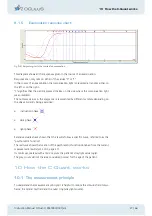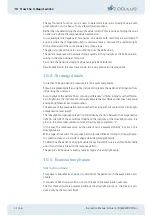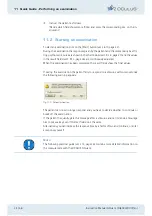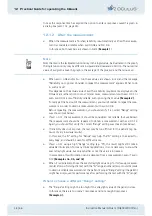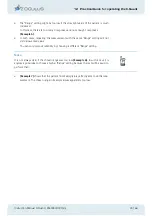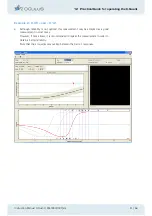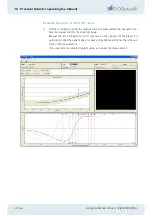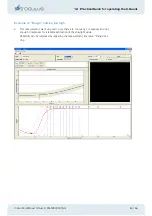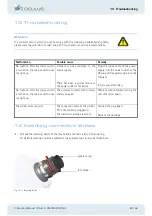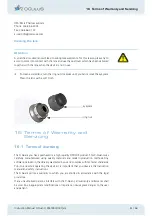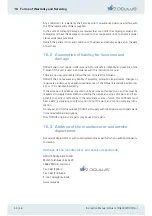
12 Practical Guide for operating the C-Quant
38 / 56
Instruction Manual C-Quant ( G/80000/1007/en)
In case the response time has expired the option to enter a response yourself is given in
a dialog box (sect. 11.2, page 34).
12.1.2
After the measurement
When the measurement is finished, reliability is automatically verified. The measure-
ment is considered reliable when esd
≤
0.08 and Q
≥
0.5.
In this case, both numbers are shown in black (
Example 1
).
☞
Note
Note that esd is the (estimated) uncertainty in the log(s) value. As illustrated in the graph,
the log(s) uncertainty may be different in upward and downward direction. The numerical
value of esd given above the graph is the average of the plus esd and the minus esd.
When esd > 0.08 and/or Q < 0.5, these values are shown in red, and the message
“Reliability not optimal. Consider to repeat the measurement” appears. What to do
in such a case?
This depends on the actual value of esd. The reliability requirements employed in the
C-Quant are rather strict. In most clinical cases, measurements with esd
≤
0.1 or
even esd
≤
0.12 are sufficiently reliable, even ignoring the Q value
(Example 2)
.
To really get the best out of the measurement, you could consider to repeat the mea-
surement in order to obtain a measurement with esd
≤
0.08.
Before repeating the measurement, you should verify if a correct "Range" setting
was chosen (see below).
If esd > 0.12, the measurement should be considered not reliable (but see below).
The measurement should be repeated to obtain a measurement with esd
≤
0.12.
Again, you should first verify if a correct "Range" setting was chosen (see below).
If reliability does not improve, the test may be too difficult for the patient (e.g. be-
cause of very low visual acuity).
In this case, the “G” setting for "Range" may help. The “G” setting is the easiest for
everybody, and should be used for difficult cases.
If esd > 0.12 using a high "Range" setting (e.g. “G”), the result might still contain
valuable information. For many clinical applications, it is not necessary to know the
exact straylight value, but only whether or not the value is increased.
In some cases, this information can be deduced from a measurement, even if esd >
0.12
(Examples 3a, 3b, and 3c)
.
When it is desirable to know the exact straylight value (e.g. for follow-up measure-
ments) after performing the test with the “G” range, another attempt could be made
to obtain a reliable measurement at the patient’s proper "Range" setting (the patient
might have improved his performance after performing the test with the “G” range).
When to choose a different "Range" setting?
The "Range" setting might be too high if the straylight value of the patient is low.
In this case, there are too many 1 responses and not enough 0 responses
(Example 4)
.




